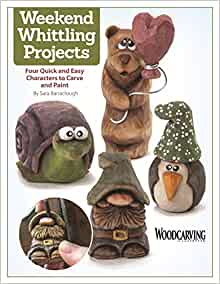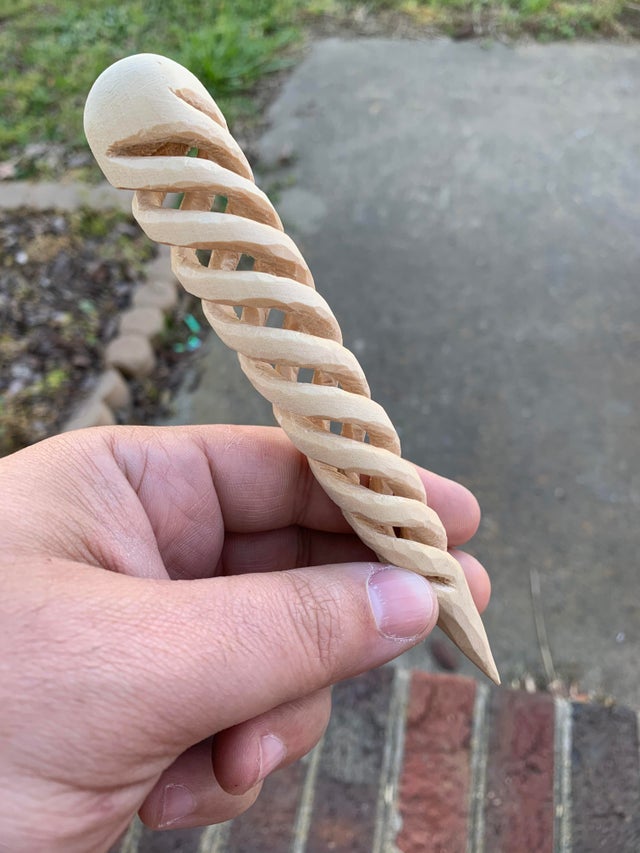
Whittling Twigs & Branches: A book that will help beginners as well as seasoned woodcarvers, is a great resource for whittling. The book is a great introduction to woodworking and will introduce you to curling, a fundamental technique for making beautiful pieces. The author is a skilled woodcarver who has been carving wood for many, many years. His instructions are easy to follow and clear.
Chris Lubkemann
For many, the world of whittling is a fascinating subject. Chris Lubkemann, author of five books on the subject, has long been interested in whittling and has shared his knowledge with readers through his book Whittling Twigs and Branches. This book includes step-by-step instructions and picture galleries showing the finished products of his whittling.
Chris Lubkemann has created this whittling book that includes 18 projects. It will show you how to whittle. It also covers how to use the proper tools and materials for whittling, what woods are best for carving, and how safe to sharpen knives. If you are looking for inspiration, it is a great resource.
Chris Lubkemann whittling branches and twigs

This video is perfect for anyone who has ever wanted to carve branches or twigs. Chris Lubkemann, a master woodworker, has a new method of witting that creates curls of wood with perfect shapes. He can carve anything from birds to carved items using his versatile technique. Lubkemann demonstrates his craft at Lancaster County’s Amish House and Farm Museum.
This step-by -step guide will give you all the information you need to create beautiful carvings. To make your masterpieces look amazing, all you need is a pocketknife. The book is easy to follow and is suitable for beginning whittlers. The book also teaches you how to carve twigs or branches using a pocketknife.
FAQ
What else should I know about woodworking in general?
It is easy to underestimate how much work it takes to make furniture. The hardest part of the process is actually finding the right wood. It can be hard to choose from the many types of wood that are available.
A problem is that wood doesn't have the same properties. Wooden can split or crack, while some woods may warp. These things should be considered before you buy wood.
Where can I get free woodworking plans?
For free woodworking blueprints, you don’t need to read any magazines or buy any books. You only need to Google search. Simply type "free woodworking” into the search box and you'll find hundreds of websites that offer free plans.
What tools should I start with when becoming a woodworker?
Woodworking is an art that takes patience and practice. Learning how to use the various tools and techniques necessary for woodworking takes patience.
There are many woodworking tools on the current market. Some people prefer using power tools while others prefer hand tools.
Your choice, however, is up to you. However, you need to ensure that the tool you use is the right one for the job. A basic set of hand tools may be enough for you if your skills are not yet developed.
You might also want to learn how a router works, which allows you to cut wood into intricate shapes. You can find these at most hardware stores.
Is it possible to refinish your own furniture?
Yes! Yes! There are many methods to refinish antique furniture without hiring a professional. Here are some examples:
Use sandpaper for removing stains and scratches. Then wipe down the surface with a clean cloth.
Apply clear polyurethane paint. Allow furniture to dry completely before you move it around.
Acrylic paint can be used to paint furniture.
Instead of painting, use stain. Furniture will look richer with the stain.
Shellac wax can be applied. This will protect and shine the wood.
What type of wood should I choose?
Oak, maple, cherry and mahogany are the most common wood types used for woodworking. Each type of wood has its own unique characteristics that can affect the final product's appearance. Oak tends to be harder and darker than other woods. Birch is lightweight and soft while mahogany is heavier and denser. You can also choose between solid wood and veneers. Veneers are thin sheets or wood that are glued together into one layer.
What is the difference in plywood and particleboard?
Plywood is a combination of layers of wood, which are then pressed together under high pressure. Plywood comes in several thicknesses and is commonly used for cabinets and flooring. Particle board is made up of sawdust mixed in resin, then compressed into large pieces. It is used primarily for home improvements. Both types of boards are durable and easy to cut.
Statistics
- In 2014, there were just over 237,000 jobs for all woodworkers, with other wood product manufacturing employing 23 percent; wood kitchen cabinets and countertop manufacturing employing 21 percent. (theartcareerproject.com)
- Average lumber prices rose about 600 percent between April 2020 and May 2021. (familyhandyman.com)
- The U.S. Bureau of Labor Statistics (BLS) estimates that the number of jobs for woodworkers will decline by 4% between 2019 and 2029. (indeed.com)
- Woodworkers on the lower end of that spectrum, the bottom 10% to be exact, make roughly $24,000 a year, while the top 10% makes $108,000. (zippia.com)
External Links
How To
How to stain wood
Stain wood is a process that involves applying chemicals to the surface of wood, which changes its color. The wood will turn from white to brownish-red due to the chemical reaction. Although oak is the most popular type of wood to stain, there are many other types that can be used.
There are many options for applying stains to wood surfaces. You can mix the stain with a solvent, such as turpentine, and spray it onto the wood. Other methods use a solution of water and dye applied directly to the wood. Stains can also be mixed into paints and varnishes, becoming part of the finish coating.
Preparing the wood surface is the first step to staining it. Clean the wood to get rid of any grease, dirt or other substances that might be detrimental to the stain's application. Sanding can smoothen out scratches and uneven spots. You must then decide on the type of stain that you wish to use. There are two types of stains that can be used: penetrating and non-penetrating. Penetrating stain penetrates deeper into wood than nonpenetrating, making them suitable for dark colors like mahogany. Non-penetrating oils work best when used with light colors, like maple.
After deciding on the type of stain, you want to apply, prepare your tools. Paintbrushes are great for applying stain because they allow you to evenly spread the liquid across the surface. To remove any stains left behind after painting, you will need some rags. If you plan on mixing the stain yourself make sure that you have enough containers to hold the different components.
After you have prepared the materials, you can clean the area where you want to stain the wood. Clean the area with soap and warm water to get rid of dirt and grime. You can wipe down the entire furniture using a damp rag with clean water. You should remove any debris, especially if your plan is to stain darker wood.
Apply the stain. The stain can be applied by spraying or brushing the stain onto one end of the furniture. Slowly and carefully work your way along the grain to reach the opposite end. The stain should not drip off of the wood's edge. Before moving on to the next steps, allow the stain drying completely.
Clear polyurethane is used to protect the painted surfaces. Three coats of polyurethane sealing agent are required. Allow the third coat of polyurethane sealer to dry overnight before applying the final coat.